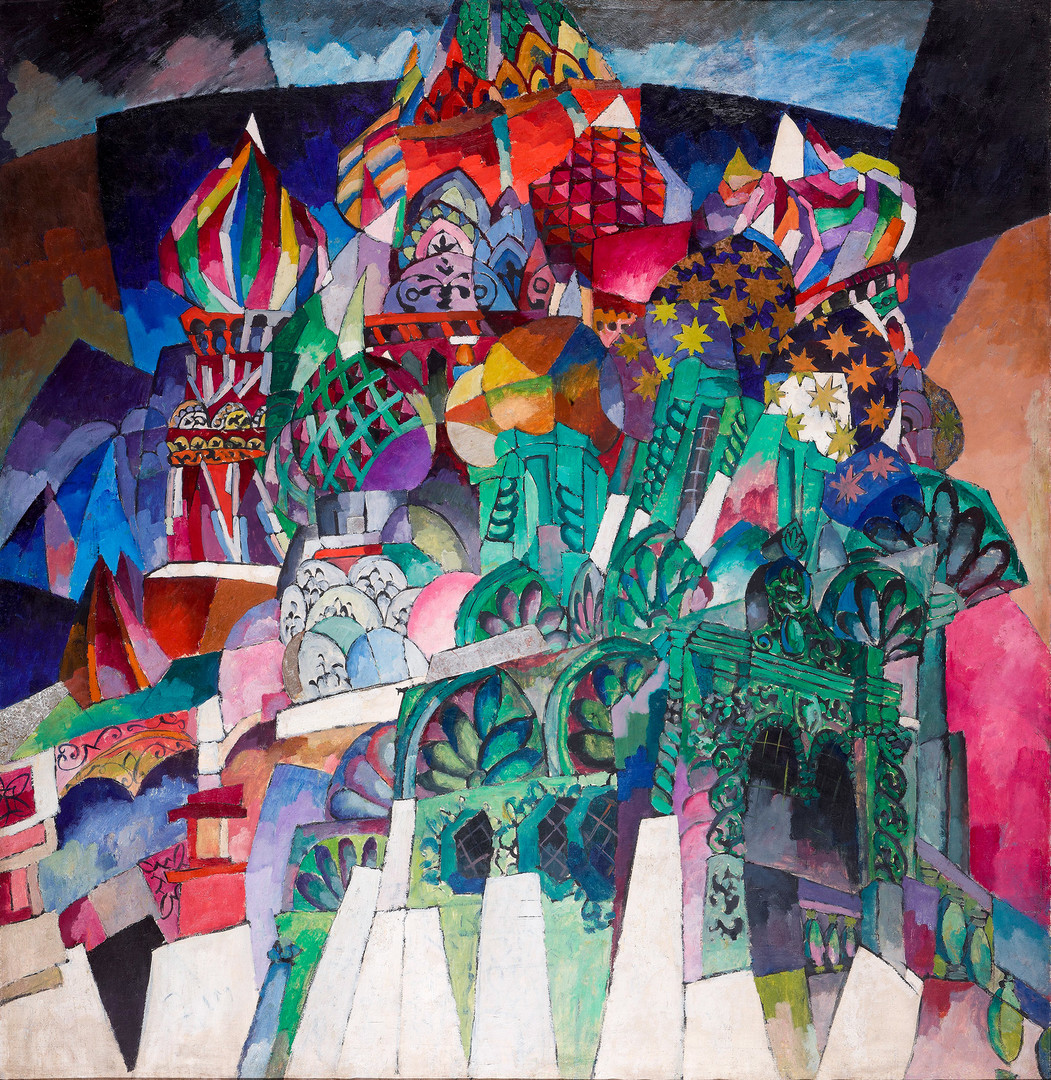Moscow depicted on canvas throughout 200 years

Natalya Nesterov. Pechatnikov Lane. 1985.
IN ARTIBUS foundation
Vasily Surikov. Illumination of the Moscow Kremlin. 1883.
The State Tretyakov GalleryKremlin, Russia’s most famous sight charms with its majestic gates, towering domes, ornate symbols and fabled clock-tower. Most of the structures were built in the 14-17th centuries and were meant to be imposing; they remain so today. This is not only the center of Russian power, but the heart of the country.

Vasily Polenov. Moscow Courtyard. 1878.
The State Tretyakov GalleryIt’s hard to believe that many Moscow districts at the end of the 19th century looked like a village. Wooden houses and barracks remained even near the center until the 1960s.

Aristarkh Lentulov. St. Basil’s Cathedral. 1913.
The State Tretyakov GalleryThis cathedral is probably one of the most recognizable symbols of Moscow, replicated on thousands of postcards and souvenirs. St. Basil's was built by Ivan the Terrible in 1555-1561 to mark the victory over the Khanate of Kazan. According to legend, Ivan the Terrible ordered the architects to be blinded after they completed work on this beautiful cathedral so that they could not replicate or surpass it elsewhere.

Boris Kustodiyev. Moscow Traktir. 1916.
The State Tretyakov GalleryA traktir is a kind of motel with a small cheap café, where travelers could not only stay for the night but also have dinner. Russian aristocrats preferred to visit restaurants, so traktirs were places for the not so rich, mostly coachmen and the petty bourgeois. Schi(cabbage soup) and sbiten (a drink made from honey, water and jam) were regulars on the menu.

Alexander Labas. Metro. 1936.
The State Tretyakov GalleryThe Moscow Metro been serving the people of Russia's capital since 1935, and has grown into one of the world's largest and busiest underground rail networks. In the 1930s, there was only one line (red) with 11 stations. Today there are 206 stations in the capital's subway system (44 of which are cultural heritage sites), and the network is continuing to expand.

Yuri Pimenov. New Moscow. 1937.
The State Tretyakov GalleryThis painting was drawn in the midst of Stalin’s reconstruction of Moscow. The general plan provided for the creation of new highways, bridges and Metro stations.

Natalya Nesterova. Gogol’s House.
The State Tretyakov GalleryIn this building on Nikitsky Boulevard, writer Nikolai Gogol spent the last four years of his life, until 1852. Here Gogol burned some of his manuscripts ten days before his death. The monument in the courtyard was installed to mark the 100th anniversary of the writer’s birth in 1909. In 1923, the house was turned into a museum of the great classic author. It was founded by Nadezhda Krupskaya, wife of Vladimir Lenin.

Konstantin Dorokhov. Moscow. University. 1953.
IN ARTIBUS foundationLomonosov Moscow State University (MSU) was founded in 1755 and is one of the oldest and largest universities in the country. But its main building on Sparrow Hills (Vorobyovy Gory) pictured here was constructed only in 1953 and became the symbol of new era of Soviet architecture.

Yevgeny Oks. Streets of Old Moscow. 1960s.
IN ARTIBUS foundationIn the 1960s Moscow significantly expanded, forming new residential areas from the nearby villages. The era of the “Khrushchevkas" (low-rise apartment buildings) began. Old Moscow was still home to wooden buildings, where the trees were taller than the roofs.

Natalya Nesterov. Pechatnikov Lane. 1985.
IN ARTIBUS foundationThe Moscow House with Caryatids was built in the early 19th century after Napoleon's invasion. In 1896 it was purchased by craftsman Peter Sysoev (co-designer of the Metropol Hotel), who decided to decorate the house with his works. In the Soviet years, the house was divided into communal apartments. Later the building stood empty for a long time, before being turned into rented offices. The house was almost destroyed, and only in 2013 was it refurbished by a private investor.
If using any of Russia Beyond's content, partly or in full, always provide an active hyperlink to the original material.
Subscribe
to our newsletter!
Get the week's best stories straight to your inbox